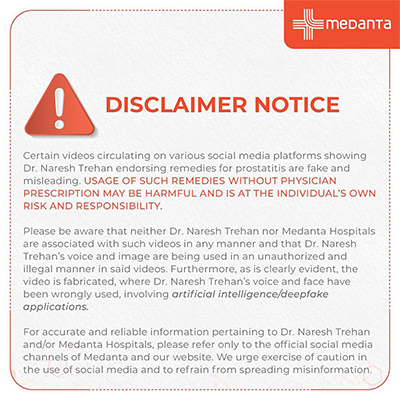Medical advancements in diagnosing and treating respiratory conditions have played a crucial role in improving patient outcomes. One such remarkable tool that has revolutionized the field of pulmonology is the bronchoscope. A bronchoscope is a slender and flexible instrument that allows doctors to examine the lungs' airways. It is commonly used to diagnose conditions such as lung cancer, chronic bronchitis, pneumonia, and tuberculosis.
The bronchoscope comes in various types, such as rigid bronchoscopes, fiberoptic bronchoscopes, and flexible bronchoscopes. Each type has its unique features and applications. The rigid bronchoscope, for instance, is often used in therapeutic procedures, while the flexible bronchoscope allows for easier access to the smaller airways. Regardless of the type, the bronchoscope has become an indispensable tool for pulmonologists worldwide.
How Bronchoscope Works?
To understand how a bronchoscope works, delving into its intricate design is essential. A bronchoscope consists of a long, flexible tube with a light source and a camera attached to the end. The tube is inserted through the mouth or nose and guided down the throat and into the airways. The camera provides a real-time video feed, allowing the doctor to visualize the airways and identify abnormalities or lesions.
The bronchoscope can also be equipped with additional tools, such as biopsy forceps or brushes, to collect tissue samples for further analysis. This minimally invasive procedure significantly reduces the need for more invasive diagnostic techniques, such as open lung biopsies or thoracotomies. With technological advancements, bronchoscopes now offer high-definition imaging and even 3D visualization, enhancing the accuracy of diagnoses.
Preparation before Bronchoscope
Before undergoing a bronchoscope, specific preparations are necessary to ensure a safe and successful procedure. Your doctor will provide detailed instructions tailored to your individual needs. Your doctor may suggest you refrain from eating or drinking for several hours before the procedure. It helps prevent any complications, such as aspiration of food or drink into the lungs during the bronchoscope.
In addition, you must inform your doctor about any medications you are taking, including over-the-counter drugs and supplements. Some medications, such as blood thinners, may need to be temporarily discontinued before the procedure to minimize the risk of bleeding. Your doctor will guide you through this process and provide alternative recommendations if necessary.
What happens during the procedure?
As the day of the bronchoscope arrives, you may experience mixed emotions, including nervousness and anticipation. Rest assured that the medical team will make every effort to ensure your comfort throughout the procedure. Typically, the bronchoscope is performed under local anesthesia, meaning only the throat and airways are numbed. In some cases, doctors may use conscious sedation to help you relax.
Once the anesthesia takes effect, the bronchoscope will be gently inserted through your mouth or nose and guided into the airways. You may experience a slight discomfort or gag reflex, but it should not be painful. The camera attached to the bronchoscope allows the doctor to visualize the airways and perform any necessary interventions, such as taking biopsies or removing foreign objects. The entire procedure usually takes 30 minutes to an hour, depending on the case's complexity.
Post Treatment
After the bronchoscope, you will be monitored closely in a recovery area until the effects of the anesthesia wear off. It is common to experience a sore throat or mild cough due to the irritation caused by the bronchoscope. These symptoms typically resolve within a few days. Your doctor may prescribe medications to alleviate any discomfort or provide specific instructions for post-procedure care.
Following your doctor's advice regarding any restrictions on eating, drinking, or physical activities after the bronchoscope is crucial. It will help minimize the risk of complications and ensure a smooth recovery. In case you experience any severe pain, excessive bleeding, or difficulty breathing, it is vital to seek immediate medical attention.
What are the benefits?
The bronchoscope offers numerous benefits that have transformed the field of pulmonology. The first and most crucial benefit is direct visualization of the airways, allowing doctors to diagnose and treat various respiratory conditions accurately. Bronchoscope eliminates the need for more invasive procedures, reducing patient discomfort and recovery time. Additionally, doctors can use a bronchoscope to perform therapeutic interventions, such as removing obstructions or delivering medications directly to the lungs.
Furthermore, the bronchoscope allows for early detection of lung cancer and other respiratory malignancies. By obtaining tissue samples through biopsies, doctors can determine the stage and type of cancer, guiding the most appropriate treatment plan. This early detection significantly improves the chances of successful treatment and long-term survival. Overall, the bronchoscope has revolutionized the way respiratory diseases are diagnosed and managed, leading to better outcomes for patients worldwide.
What Are the Risks?
While the bronchoscope is generally a safe procedure, certain risks can occur like any other medical intervention. Common risks include bleeding, infection, and airways or vocal cord damage. However, these are rare complications and typically occur in less than 1% of cases. The benefits of the bronchoscope usually outweigh the risks, mainly when performed by experienced and skilled medical professionals.
Communicating openly with your doctor about any pre-existing medical conditions or concerns you may have is essential. It will allow them to assess your risk factors and take appropriate precautions during the procedure. By following the recommended guidelines and choosing a reputable healthcare facility, you can minimize the likelihood of complications associated with the bronchoscope.
Conclusion
The bronchoscope is a unique tool due to its versatility and non-invasiveness. Unlike traditional diagnostic techniques, such as open lung biopsies or thoracotomies, the bronchoscope allows doctors to access the airways without making large incisions. This minimally invasive approach reduces patient discomfort, lowers the risk of complications, and shortens recovery time.
FAQs
What is a bronchoscope?
A bronchoscope is a slender, flexible instrument to examine the lungs' airways. It consists of a long tube with a light source and a camera attached to the end.
What are the uses of a bronchoscope?
A bronchoscope helps diagnose and treat respiratory conditions like lung cancer, chronic bronchitis, pneumonia, and tuberculosis. It allows doctors to visualize the airways and perform interventions, such as biopsies and foreign object removal.
Is the bronchoscope a painful procedure?
The examination with a bronchoscope is generally not painful. Doctors use local anesthesia to numb the throat and airways, minimizing discomfort during the procedure. Some patients may experience a gag reflex or mild discomfort, but it should not be overly painful.
Are there any risks associated with the bronchoscope?
While the bronchoscope is generally safe, certain risks, such as bleeding, infection, and airway damage, can still occur. However, these complications are rare.
How long does the bronchoscope procedure take?
The bronchoscope procedure usually takes around 30 minutes to an hour, depending on the case's complexity. Recovery time may vary, but most patients can resume normal activities within a few days.


